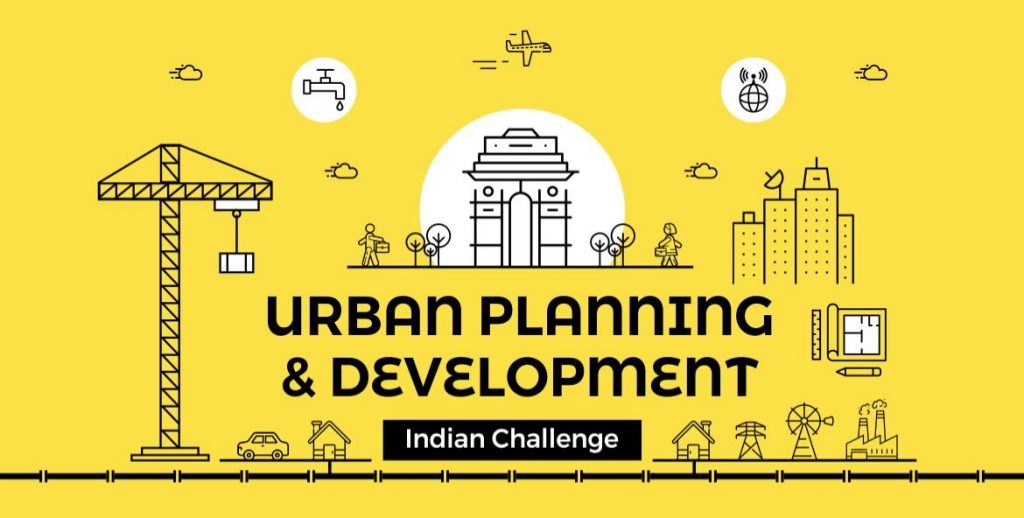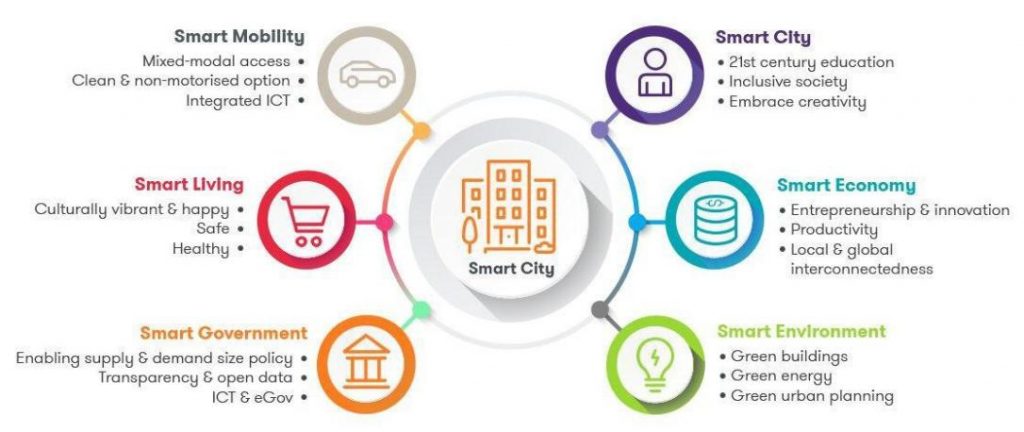Development and Urbanisation-
Development is inextricably linked to urbanisation, which is a significant driver of economic expansion. As India approaches the critical point of moving from a primarily rural to an urban culture, the focus must be on getting the best results possible. For all areas of society, there are prospects for economic advancement.
Despite significant investment, our cities continue to face several efficiency and sustainability-related difficulties. In several global rankings, none of our cities are among the top 50. The necessity of the hour is for a sharp, analytical planning, without which neither investments nor activities can generate long-term results. Unplanned urbanisation may have catastrophic consequences.

Figure 1 Urban Planning Capacities in India: Development and Urbanisation
Source: Niti Ayog Report on Reforms in Urban Planning Capacity In India, September 2021
Indian Scenario-
India has the world’s second largest urban system, with about 11% of the global urban population residing in Indian cities. In terms of absolute numbers, India’s urban population outnumbers that of other highly urbanised countries and areas throughout the world. Depending on corrective policy measures and actions adopted at the start of this decade, India’s urban narrative may be applauded globally or suffer long term damage in the next 10-15 years.
Development control policies in many Indian cities were evolved decades ago and have been modified haphazardly without sufficient empirical proof of their effects. Many cities’ development control policies stretch back decades and have been changed haphazardly without adequate empirical evidence of their effects. It is important that municipal governments should adjust the model regulations to their unique contexts and economic growth factors. In addition, there is a need to move away from text-based rules and toward form-based regulations in order to assure the most efficient use of urban land and to allow development based on an appropriate urban form.

Figure 2 Urban Planning and Development: Indian Challenge
Source: Public Policy Advisory by Athenainfonomics, Urban Planning India by Dr. Shovan K. Saha
The way forward-
By 2030, every city should aspire to become a “healthy city for all.” This would require the coordination of multi-sectoral initiatives at the crossroads of spatial planning, public health, and socioeconomic development. In addition, the focus of urban growth planning must include hundreds of small and medium-sized towns in addition to the million-plus metropolis.
Urban Planning, as taught in Sushant University, one of the best universities in Gurgaon, promotes the concept of multi-sectoral development in order to benefit the country as a whole. The Town and Country Planning Act has been enacted in most states in India, allowing them to prepare and notify master plans for execution. These Acts serve as a foundation for transforming cities, regions, and their identities. Many, on the other hand, need to be evaluated and updated to reflect the most recent technological breakthroughs, as well as urban and regional planning techniques and policies. As a result, it is recommended that a State-level apex committee should be established to conduct periodical reviews of planning legislation for improvising urban capacities in India.
Sushant University, one of the fastest growing private universities, is always focused on imparting the best knowledge to the students through their various academic curriculums. With the aim of bringing the students at par with the ever-developing industry requirements and making them aware of the importance of development of a nation as a whole, it also offers a course in Planning in which students are taught through various learning pedagogies like Experiential learning, Theory and Practical sessions. It is high time that the potential of Urban Planning is realized as a holistic development tool and not merely as a subject teaching a city designing process.

Source: Rebuild cities as spaces of Dignity, Indian Express, July 2020
